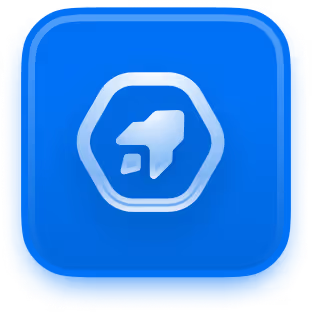Email marketing remains one of the most effective ways to connect with customers. In 2023, email marketing had an average return on investment (ROI) of $42 for every $1 spent.
With over 4.3 billion email users worldwide, businesses can leverage mass email campaigns to engage, convert, and retain customers. However, sending bulk emails requires strategy, tools, and best practices to ensure high deliverability and engagement.
In this guide, we will cover everything you need to know about creating and sending a successful mass email campaign.
What is a Mass Email Campaign?
A mass email campaign involves sending a single email to hundreds or thousands of recipients at once. Businesses use this method for promotions, newsletters, product updates, event invitations, and more.
Unlike one-to-one emails, mass emails require proper planning to avoid spam filters, improve open rates, and drive conversions. Using email marketing software and following best practices can significantly enhance your campaign's performance.
_11zon.jpg)
Benefits of Mass Email Marketing
Mass email marketing is one of the most effective ways to reach a large audience. It allows businesses to send personalized messages to thousands of people in just a few clicks. Whether you're promoting a product, announcing a sale, or sharing updates, email marketing helps you stay connected with your customers.
Cost-Effective
Email marketing is much cheaper than other forms of marketing, such as social media ads or Google Ads. With the right strategy, businesses can generate leads and sales at a fraction of the cost. Many email marketing tools also offer free or low-cost plans, making it accessible for small businesses.
High Reach
With over 4.5 billion email users worldwide, email marketing gives you the ability to reach a large audience instantly. Unlike social media platforms, where algorithms limit your visibility, emails land directly in the recipient’s inbox, increasing the chances of being seen.
Personalization
Personalized emails perform better than generic ones. By segmenting your audience based on demographics, behavior, or purchase history, you can send highly targeted messages. Studies show that personalized emails generate 6x higher transaction rates than non-personalized ones.
You can use our Success.ai’s AI email writer tool to generate good transaction rates by sending personalized emails to your potential customers.
Automated Workflows
Automation allows businesses to send emails at the right time without manual effort. Whether it’s a welcome email, abandoned cart reminder, or birthday discount, automated workflows improve customer experience and drive conversions.
Data-Driven Insights
Email marketing platforms provide detailed analytics, allowing businesses to track open rates, click-through rates, conversions, and more. This data helps marketers improve their campaigns, optimize subject lines, and refine email content for better results.
Increased Engagement
A well-crafted email with engaging content and interactive elements boosts customer interaction. Interactive emails encourage recipients to participate, leading to higher click rates and more website visits.
Step 1: Define Your Email Campaign Goals
Before sending mass emails, define your objectives. A well-planned goal helps you create effective content and measure success.
Common Email Marketing Goals
Every email marketing campaign should have a clear goal. Whether you want to increase sales, boost engagement, or improve customer retention, defining objectives helps you measure success.

Increase Sales
Emails can drive sales by promoting discounts, special offers, and new products. Businesses can send personalized product recommendations based on a user’s browsing history to increase conversions. Cart abandonment emails alone can recover up to 30% of lost sales.
Boost Engagement
Interactive newsletters, quizzes, and surveys keep your audience engaged. The more engaging your content, the higher the chances of customers interacting with your brand.
Build Brand Awareness
Consistently appearing in your subscribers’ inbox helps establish your brand presence. Educational content, company updates, and industry insights help build trust and authority.
Drive Website Traffic
Emails can encourage users to visit your website by linking to blog posts, landing pages, or product pages. Well-placed CTAs (call-to-actions) drive traffic and increase conversions.
Nurture Leads
Lead nurturing emails help move potential customers through the sales funnel. Sending valuable content at the right time builds trust and encourages prospects to become paying customers.
Improve Customer Retention
Loyalty programs, exclusive offers, and re-engagement campaigns help keep existing customers engaged. Retaining customers is more cost-effective than acquiring new ones, making retention strategies essential.
Step 2: Build and Segment Your Email List
Your email list is the backbone of your mass email campaign. Sending emails to unengaged users or invalid addresses can reduce your deliverability rate.
How to Build an Email List
Building a high-quality email list is crucial for successful email marketing. Instead of buying email lists, which can harm your reputation, focus on growing an organic list of engaged subscribers.
_11zon.jpg)
Use Sign-Up Forms
Place email subscription forms on your website, blog, and checkout pages. Make the form simple and easy to fill out, only asking for essential details.
Offer Lead Magnets
People are more likely to subscribe if they get something in return. Offer free e-books, guides, templates, or discount codes as incentives for signing up.
Collect Emails from Social Media
Promote your email newsletter on Facebook, LinkedIn, Twitter, and Instagram. Use social media ads to encourage people to sign up.
Run Contests & Giveaways
Contests are a great way to grow your email list quickly. Offer an attractive prize and require participants to enter their email addresses to join.
Use Pop-Ups and Landing Pages
Exit-intent pop-ups and dedicated landing pages can help capture email subscribers. Use compelling copy and a clear CTA to encourage sign-ups.
Ask for Referrals
Encourage existing subscribers to refer friends by offering rewards like discounts or freebies. Referral programs help grow your list organically.
Why Email Segmentation Matters
Segmenting your list improves engagement and conversions. Segmented campaigns see a 760% increase in revenue compared to non-segmented campaigns.
- Demographics – Target users based on age, gender, or location.
- Behavioral Data – Send emails based on user activity.
- Purchase History – Recommend products based on past purchases.
- Engagement Levels – Re-engage inactive subscribers.
- Customer Interests – Personalize emails with relevant content.
- New vs. Existing Customers – Send tailored emails to different customer segments.
Step 3: Create Engaging Email Content
Your email content determines whether recipients open, read, and take action. The average email open rate across industries is 21.33%, and strong content helps improve this.
_11zon.jpg)
Writing an Attention-Grabbing Subject Line
- Keep it Short & Clear – Ideal length: 6-10 words.
- Use Personalization – Include the recipient’s name.
- Create Urgency – Example: “Hurry! Sale Ends Tonight!”
- Ask a Question – Example: “Looking for the Best Deals?”
- Avoid Spam Words – Words like “Free” or “Guarantee” may trigger spam filters.
- Use Emojis Sparingly – They can boost open rates but should be relevant.
Crafting the Perfect Email Body
- Start with a Strong Hook – Grab attention in the first sentence.
- Personalize the Content – Address subscribers by name.
- Keep it Concise – Avoid long paragraphs and unnecessary details.
- Use Bullet Points – Improves readability.
- Include a Clear CTA (Call-to-Action) – Example: “Shop Now” or “Download Free Guide.”
- Make it Mobile-Friendly – Over 50% of emails are opened on mobile devices.
Step 4: Choose the Right Email Marketing Software
Using the right email marketing software helps automate and optimize mass email campaigns.
Features to Look for in an Email Marketing Tool
- Bulk Email Sending – Ability to send thousands of emails at once.
- Email Personalization – Dynamic content and merge tags.
- Automation Workflows – Send emails based on triggers.
- A/B Testing – Test subject lines, content, and CTAs.
- Analytics & Reporting – Track open rates, clicks, and conversions.
- Spam Compliance – Ensure compliance with CAN-SPAM and GDPR.
Best Email Marketing Platforms
- Success.ai – AI-powered email marketing automation.
- Mailchimp – Great for small businesses.
- Constant Contact – User-friendly and feature-rich.
- HubSpot Email Marketing – Ideal for CRM integration.
- Sendinblue – Best for transactional emails.
- ActiveCampaign – Advanced automation features.
Step 5: Optimize for Deliverability and Avoid Spam Filters
Ensuring your emails reach the inbox is crucial for campaign success.
Best Practices to Improve Email Deliverability
- Authenticate Your Domain – Use SPF, DKIM, and DMARC records.
- Use a Verified Email Address – Avoid free email providers like Gmail or Yahoo.
- Warm Up Your Email Account – Gradually increase sending volume.
- Avoid Spam Triggers – Don’t use excessive exclamation marks or all caps.
- Send Relevant Content – Engage subscribers with valuable emails.
- Monitor Bounce Rates – Remove invalid email addresses.
_11zon.jpg)
Step 6: Track and Improve Email Performance
Analyzing email performance helps optimize future campaigns.
Key Email Marketing Metrics to Track
- Open Rate – Measures how many recipients opened your email.
- Click-Through Rate (CTR) – Percentage of people who clicked on links.
- Conversion Rate – Tracks how many recipients took action.
- Bounce Rate – The percentage of emails that weren’t delivered.
- Unsubscribe Rate – Number of people opting out of emails.
- Spam Complaints – Helps avoid being blacklisted.
How to Improve Future Email Campaigns
- A/B Test Subject Lines & Content – Find what works best.
- Segment and Personalize – Boost engagement with targeted emails.
- Optimize Send Time – Best times: Tuesday and Thursday, 10 AM - 2 PM.
- Improve Email Design – Use clear formatting and visuals.
- Re-engage Inactive Subscribers – Send special offers or surveys.
- Analyze Reports & Adjust Strategy – Use insights for better results.
Conclusion
A successful mass email campaign requires careful planning, the right tools, and constant optimization. By setting clear goals, segmenting your audience, crafting engaging content, and tracking performance, you can boost engagement and conversions.
At Success.ai we offer AI-powered email marketing automation to help businesses create, send, and optimize mass email campaigns with ease. Try our tools today to enhance your email marketing strategy!


Try Success.ai No credit card required
Unlock unlimited access to 700M+ B2B leads, with unlimited email sending & warm-up. Supercharge your growth now with Success.ai!
















.avif)


.avif)





.avif)






.avif)









_11zon.jpg)




.jpg)

-min.jpg)









.avif)
.svg)
.avif)

